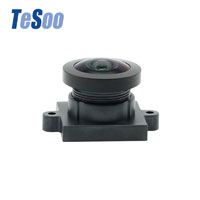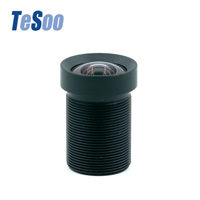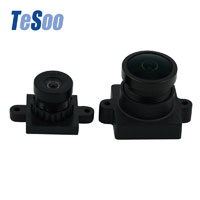Fisheye Lens Visual System Model and Design Model
1. Fisheye lens visual system model
One of the key points of fisheye lens imaging is to be able to correctly describe the image points of the target points in the three-dimensional space on the imaging plane, and to accurately establish the corresponding relationship. To achieve this goal, it is necessary to establish a visual imaging model and analyze the rules. Fisheye lenses are mostly designed using the isometric theorem.
The fisheye camera imaging model in the model consists of five coordinate systems: world coordinate system, fisheye lens coordinate system, camera coordinate system, image coordinate system, and imaging coordinate system.
2. Fisheye lens distortion correction
The fisheye lens relies on artificially introducing a large amount of barrel distortion to obtain a large viewing angle, so as to obtain image information with a large field of view. Therefore, the shape of the object in the center of the image remains unchanged, and other parts that should be straight lines have certain distortions. There are many restrictions on its application. Meanwhile, Tesoo also provides non fisheye lens for customers to choose.
For example, in the field of security, a fisheye lens can replace multiple ordinary lenses to monitor a wide range. Since the viewing angle can reach 180°, there is almost no dead angle for monitoring. Even if only one lens is used, there is almost no way to move or destroy the lens. However, due to the distortion of the image, it is difficult to recognize the object with the human eye, which greatly reduces the monitoring ability; another example in the field of robotics, automated robots require the ability to collect image information of surrounding scenes and identify them to take corresponding actions. If a fisheye lens is used, the acquisition efficiency can be increased by 2-4 times, but the general recognition software is difficult to apply due to the introduction of distortion. So we need some way to recognize the image from the fisheye lens.
One way is to identify directly in the original image, such as an algorithm that can identify the position of the sun in the image, but due to distortion, the characteristics of the same object will also change at different positions, which will greatly increase the amount of software computation. , and it is difficult to realize the recognition of complex graphics. Therefore, the common method now is to cancel the distortion in the image through a series of transformations, so as to obtain a normal image and then identify it.
3. Fisheye lens design model
The usual optical systems are based on Gaussian optics and follow similar imaging criteria, while the widest non fisheye lens are non-similar imaging, so it is necessary to choose other imaging formulas to replace the Gaussian optical imaging formula, and each imaging formula corresponds to a lens design model.
There are four commonly used fisheye lens models, namely equidistant projection, equal solid angle projection, stereo projection, and orthogonal projection.
Popular Camera Lens
Hot Camera Lens Articles

 English
English 

